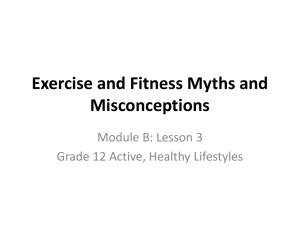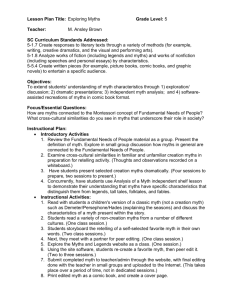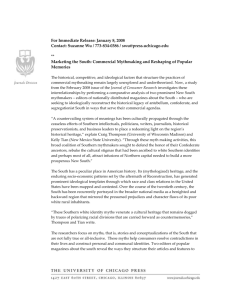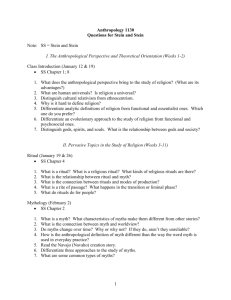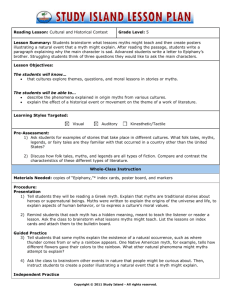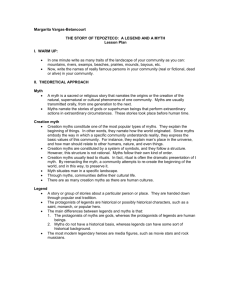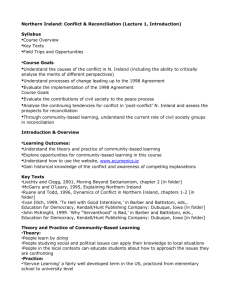Ways of Interpreting Myth
advertisement
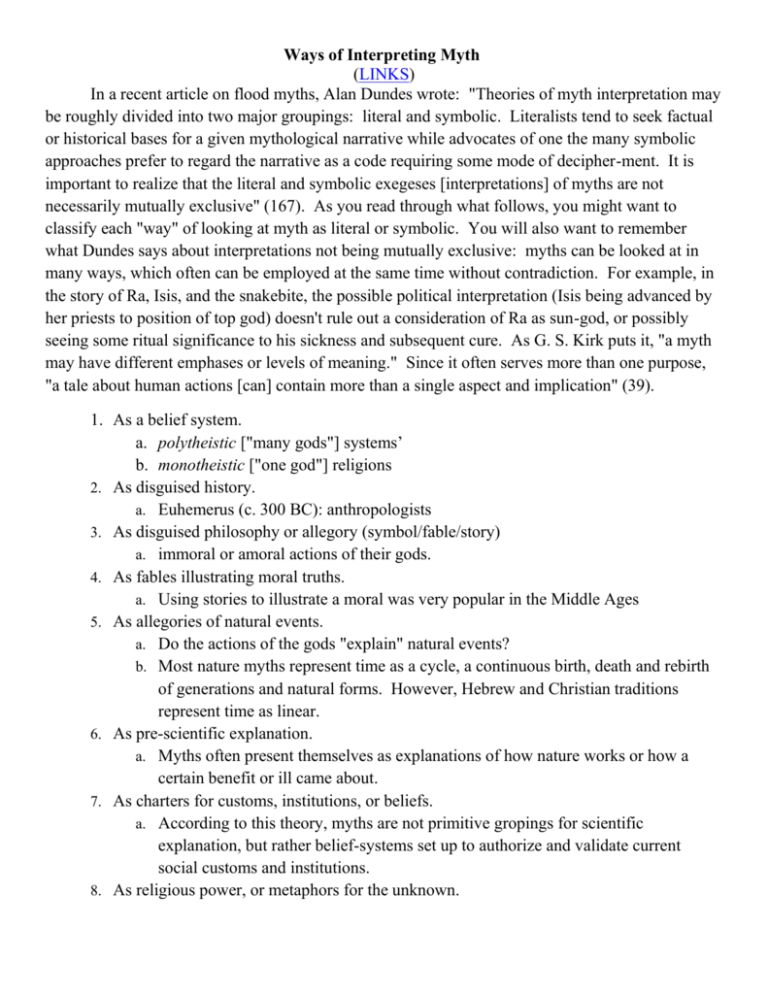
Ways of Interpreting Myth (LINKS) In a recent article on flood myths, Alan Dundes wrote: "Theories of myth interpretation may be roughly divided into two major groupings: literal and symbolic. Literalists tend to seek factual or historical bases for a given mythological narrative while advocates of one the many symbolic approaches prefer to regard the narrative as a code requiring some mode of decipher-ment. It is important to realize that the literal and symbolic exegeses [interpretations] of myths are not necessarily mutually exclusive" (167). As you read through what follows, you might want to classify each "way" of looking at myth as literal or symbolic. You will also want to remember what Dundes says about interpretations not being mutually exclusive: myths can be looked at in many ways, which often can be employed at the same time without contradiction. For example, in the story of Ra, Isis, and the snakebite, the possible political interpretation (Isis being advanced by her priests to position of top god) doesn't rule out a consideration of Ra as sun-god, or possibly seeing some ritual significance to his sickness and subsequent cure. As G. S. Kirk puts it, "a myth may have different emphases or levels of meaning." Since it often serves more than one purpose, "a tale about human actions [can] contain more than a single aspect and implication" (39). 1. As a belief system. a. polytheistic ["many gods"] systems’ b. monotheistic ["one god"] religions 2. As disguised history. a. Euhemerus (c. 300 BC): anthropologists 3. As disguised philosophy or allegory (symbol/fable/story) a. immoral or amoral actions of their gods. 4. As fables illustrating moral truths. a. Using stories to illustrate a moral was very popular in the Middle Ages 5. As allegories of natural events. a. Do the actions of the gods "explain" natural events? b. Most nature myths represent time as a cycle, a continuous birth, death and rebirth of generations and natural forms. However, Hebrew and Christian traditions represent time as linear. 6. As pre-scientific explanation. a. Myths often present themselves as explanations of how nature works or how a certain benefit or ill came about. 7. As charters for customs, institutions, or beliefs. a. According to this theory, myths are not primitive gropings for scientific explanation, but rather belief-systems set up to authorize and validate current social customs and institutions. 8. As religious power, or metaphors for the unknown. a. The mythologist Joseph Campbell sees myth as metaphors or symbols of the unknown. This "unknown" is located in two places: in the spiritual realm and in the depths of the human psyche. 9. As expressions of religious rituals. a. Nowadays, many scholars still believe that myths and rituals are connected, but they see the relations between the two as more complex than a simple "who came first." 10. As examples of psychological archetypes. a. Swiss psychologist Carl Gustav Jung (1875-1961) reasoned that many of these motifs or themes must be the products of some sort of "myth-forming structural elements . . . in the unconscious psyche" (Jung 71) 11. As stories. a. Since myths are traditional stories, they often exhibit characteristics of other sorts of traditional tales, most notably folktales 12. As embodying irreconcilable structural conflicts in social systems. a. Often called "structuralist," this approach was invented by French anthropologist Claude Lévi-Strauss Assignment: Consider your Independent-reading novel: Discuss with your reading group how you would interpret the novel: What examples can you provide to support your interpretation? Does your interpretation cover the entire book or just a certain section? How many different ways has the group identified for interpretation? Select the interpretation that you wish to use and write a five paragraph essay on how the novel you read can be interpreted as a myth. Some of the interpretations do lend themselves to combining. Please see Mrs. Vandigriff for approval of your interpretation. Assignment Due Date:__________________





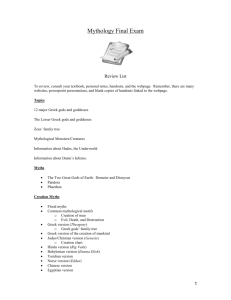
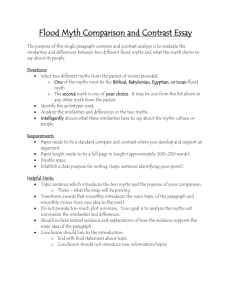




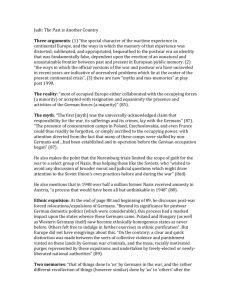
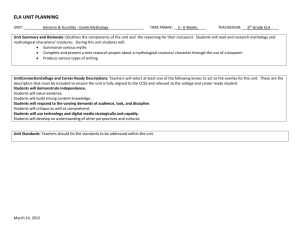
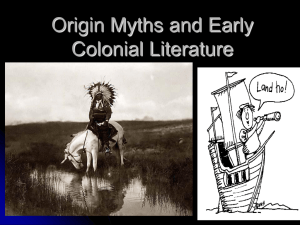
!['-iL~J~ (}3ringing Ofympus C])own to CEartli](http://s2.studylib.net/store/data/011213175_1-72bf7afe4862eefc274f34de5ccdf9ce-300x300.png)
